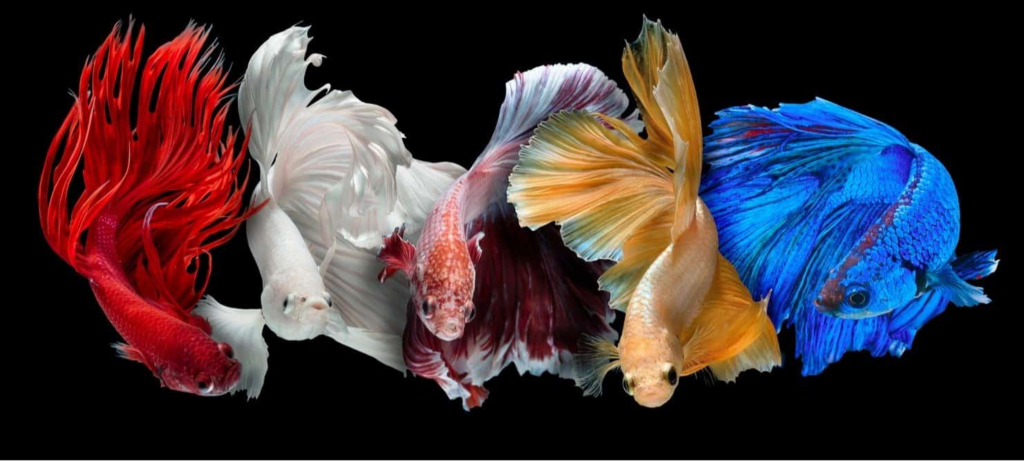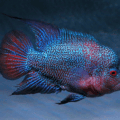Siamese fighting fish, also known as Betta fish, have become increasingly popular as pets. Their vibrant colors, unique fin types, and interactive nature make them a fascinating addition to any aquarium.

In this article, we will explore the characteristics of Siamese fighting fish, their suitability as pets, and provide tips on how to care for them. So, are Siamese fighting fish good pets? Let’s get into the details to find out.
Characteristics of Siamese Fighting Fish
Siamese fighting fish are known for their stunning physical appearance. They come in a wide range of colors, including vibrant reds, blues, greens, and even metallic shades.
Their scales can be solid-colored, marbled, or patterned, adding to their visual appeal.
Additionally, Siamese fighting fish exhibit various fin types such as crowntail, halfmoon, and even double tail, each with its unique appearance.
The Suitability of Siamese Fighting Fish as Pets
Siamese fighting fish make excellent pets, particularly for beginners. Their low maintenance requirements make them ideal for those starting their fish-keeping journey.
These fish are also well-suited for small spaces, like aquariums or even fish bowls, and don’t require complex filtration systems.
Additionally, Siamese fighting fish can live in solitude, sparing you the need to have a school of fish.

Creating the Ideal Environment for Siamese Fighting Fish
Providing a suitable environment is crucial for the well-being of your Siamese fighting fish. It is recommended to provide them with a tank of at least 5 gallons to ensure ample swimming space.
Maintaining a stable water temperature between 75°F and 80°F is essential, along with regular water quality testing.
Decorative elements like plants, rocks, and hiding spots will make your fish feel secure and mimic their natural habitat.
Feeding and Nutrition for Siamese Fighting Fish
To keep your Siamese fighting fish healthy, it’s important to provide them with a balanced diet.
Commercial betta pellets or flake foods specifically formulated for bettas are readily available in pet stores.
Supplementing their diet with occasional treats like freeze-dried or live foods can provide additional nutrients.
However, be cautious not to overfeed, as overfeeding can lead to health issues.

Siamese Fighting Fish Health and Care
Like any pet, Siamese fighting fish are susceptible to certain health issues. Common problems include fin rot, bacterial infections, and fungal diseases.
It is crucial to perform regular water changes and keep their tank clean to prevent these issues. Should your fish show any signs of distress or illness, consult a knowledgeable fish veterinarian to ensure proper treatment.
Explore how betta fish live and interact with other species in a community setup. This section examines the compatibility of male bettas and female bettas with other tropical fish species, including African dwarf frogs.
Learn about the challenges and considerations when housing bettas with other popular freshwater aquarium fish in the same tank, ensuring the environment remains peaceful and suitable for all inhabitants.
Tips for Handling and Interacting with Siamese Fighting Fish
While Siamese fighting fish are generally not keen on being handled, you can still interact with them in other ways.
Take time to observe their behaviors, and you may notice their unique personalities shining through.
Bonding with your Siamese fighting fish can be achieved by establishing a routine and offering them a variety of enrichment, such as toys or floating plants, which can also serve as hiding spots.

Breeding Siamese Fighting Fish
Breeding Siamese fighting fish can be a rewarding experience, but it requires knowledge and proper preparation.
Before attempting to breed your fish, ensure you have separate tanks for the male and female. Provide a suitable breeding environment with plenty of hiding spots.
It is crucial to research and understand the process thoroughly to ensure responsible breeding practices.
Optimizing Nutrition and Tank Conditions for Betta Fish Health
This section focuses on the dietary needs and tank conditions essential for maintaining the health of betta splendens, commonly called Siamese fighting fish.
Discover the benefits of feeding them brine shrimp and managing uneaten food in the betta fish tank to prevent water quality issues.
Discuss the ideal fish tank setup for male betta fish and pet fish to thrive, ensuring their longevity as a popular freshwater aquarium fish.
Siamese Fighting Fish Myths and Misconceptions
There are several misconceptions associated with Siamese fighting fish that need to be addressed.
Contrary to popular belief, Siamese fighting fish cannot live in tiny bowls without proper care and filtration.
Additionally, they are not aggressive by nature and can peacefully coexist with other fish, given appropriate space and compatible tank mates.
Conclusion
Siamese fighting fish can indeed make wonderful pets for both beginner and experienced aquarists. Their beautiful colors, unique fin types, and interactive nature make them captivating additions to any aquarium.
By providing the right environment, maintaining good nutrition, and attending to their health needs, you can ensure a long and fulfilling life for your Siamese fighting fish. So, if you’re considering a new pet, don’t overlook these incredible fish!










